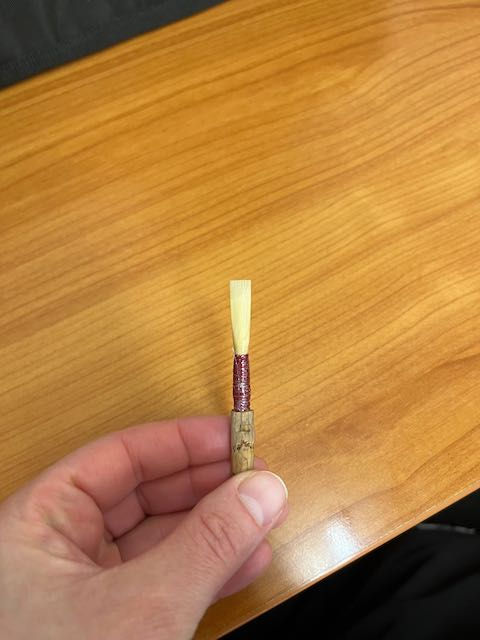How do you convince students to play oboe if reeds cost so much?
- agessneroboe
- Aug 15, 2022
- 3 min read
I’ve been thinking about a question I recently answered for a band director: “How do you convince students to play oboe if the reeds cost so much?”
What a question. It brings up my privilege to have started playing oboe when reeds cost $8.50, and my oboe teacher would adjust them to suit my needs better.
If you’re a longtime subscriber, you know that I’m an advocate of students rotating reeds (alternating between reeds to use them evenly), AND I’m a stickler when it comes to how old is “too old” for a reed that my students play on.
The oboe isn’t a cheap instrument to play. It’s unfortunate, but it’s the reality of the instrument. In my job as a private lesson teacher, having appropriate reeds is an expectation in addition to the cost of tuition for lessons. It’s part of my requirements, so I’m in a slightly different situation than many of you - I can assume families are willing to bear the costs of the reeds I tell them to buy.
So how do I suggest that you talk about and convince students to play oboe in spite of the cost of reeds? I don’t talk about the cost as the main aspect of playing the oboe. It’s a factor to be sure, but the main thing that I discuss with prospective students and parents is that students need to be willing to diligently practice. The ongoing cost of reeds is secondary to that.
Once the student has signed on, I set the expectation that the student will always rotate between two reeds, and that they need to get two new reeds each month. Rotation and playing on newer reeds is just part of playing oboe. The student will hear and feel the difference when they're playing on fresh reeds, and you can show them the difference in pitch and dynamic potential as well. Once a reed is too old, it won't have the same pitch and dynamic range as it once did, and usually gets stuck too loud or too soft, too sharp or too flat.
I also present the cost as a cost of sounding good and feeling comfortable playing. Old reeds aren't comfortable to play with a full range of dynamics and good intonation.
Finally, the adage "you get what you pay for" is really true with oboe reeds. There exist a bunch of super cheap reed options ($12 or less per reed) that are going to sound pretty awful and not be consistently hard and not be consistently in tune. Once you go to that $18-25 price point, you get a quality reed that's play-tested by an oboist, is mostly in tune out of the box, and is mostly the same hardness from one reed to the next.
The discount reed site I can direct you to is Advantage Double Reeds. If you look at their lower cost oboe reeds, they're all made on a machine (you can see in the pictures that they look pretty much the same between brands as far as what part of the reed is thinned). A machine made reed is great for the first 3-6 months (you could manage a year if you're not going to teach intonation), but after that point I would switch students to a higher cost, higher quality reed. The reeds on Advantage that I'd recommend for a student who needs to level up are any that are listed as "pro" or "professional".
This is not an easy topic to address with parents, but one that we need to get comfortable addressing. I see it as part of what’s needed to play oboe well, but I also know that there are plenty of students who manage to play just fine on budget reeds until they can get to high school or college and learn to make their own reeds.
Until next week, I’ll leave you with the reed review videos from Oboe Ron of Jones reeds and Emerald reeds. If you care to watch all the way through you’ll hear him play test and talk about the range of Jones oboe reeds. He does a great job summing up why I don’t recommend machine made reeds to my students.
Alli




Comments